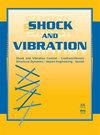Driving Comfort Analysis Method of Highway Bridge Based on Human-Vehicle-Bridge Interaction
IF 1.2
4区 工程技术
Q3 ACOUSTICS
引用次数: 0
Abstract
Research on evaluating highway bridge performance through vehicle-bridge interaction (VBI) analysis has made significant advancements. However, when assessing driving comfort, using vehicle acceleration instead of human acceleration poses challenges in accurately representing comfort. First, the paper proposes a finite element analysis method for human-vehicle-bridge spatial interactions (HVBSIs). Then, the importance of wheel path roughness difference is explored when assessing driving comfort. Furthermore, a new method for evaluating driving comfort that includes human and vehicle vibration responses has been proposed, and a simulation example of the steel-concrete composite beam bridge (SCCBB) is used to verify the effectiveness of the proposed method. The results demonstrate that the HVBSI analysis method effectively simulates the interconnected vibrations of the human body, the spatial vehicle model, and the three-dimensional (3D) bridge model. Differences in wheel path roughness significantly impact the roll vehicle vibration responses, which are crucial in driving comfort analysis. The driver’s body vibration response is essential for evaluating driving comfort, and its inclusion leads to increased comfort indices values. In comparison to traditional methods, the overall vibration total value (OVTV) increases by a maximum of 109.04%, and the level of weighted vibration () increases by a maximum of 6.74%. This leads to an upgrade from grade IV to grade V in terms of comfort level, indicating a reduced comfort.基于人-车-桥互动的公路桥梁驾驶舒适性分析方法
通过车桥相互作用(VBI)分析评估公路桥梁性能的研究取得了重大进展。然而,在评估驾驶舒适性时,使用车辆加速度而非人的加速度会给准确体现舒适性带来挑战。首先,本文提出了人-车-桥空间相互作用(HVBSI)的有限元分析方法。然后,探讨了轮径粗糙度差异在评估驾驶舒适性时的重要性。此外,本文还提出了一种包含人和车辆振动响应的新的驾驶舒适性评估方法,并通过钢-混凝土组合梁桥(SCCBB)的仿真实例验证了所提方法的有效性。结果表明,HVBSI 分析方法能有效模拟人体、空间车辆模型和三维(3D)桥梁模型之间的相互关联振动。轮迹粗糙度的差异会显著影响车辆的滚动振动响应,这在驾驶舒适性分析中至关重要。驾驶员的身体振动响应对于评估驾驶舒适性至关重要,将其包括在内可提高舒适性指数值。与传统方法相比,整体振动总值(OVTV)最大增加了 109.04%,加权振动水平()最大增加了 6.74%。这导致舒适度从 IV 级升至 V 级,表明舒适度有所降低。
本文章由计算机程序翻译,如有差异,请以英文原文为准。
求助全文
约1分钟内获得全文
求助全文
来源期刊

Shock and Vibration
物理-工程:机械
CiteScore
3.40
自引率
6.20%
发文量
384
审稿时长
3 months
期刊介绍:
Shock and Vibration publishes papers on all aspects of shock and vibration, especially in relation to civil, mechanical and aerospace engineering applications, as well as transport, materials and geoscience. Papers may be theoretical or experimental, and either fundamental or highly applied.
 求助内容:
求助内容: 应助结果提醒方式:
应助结果提醒方式:


